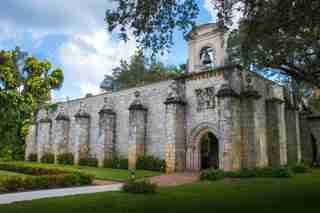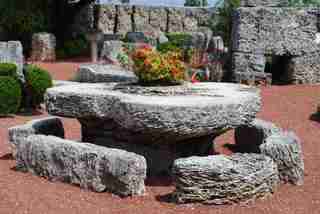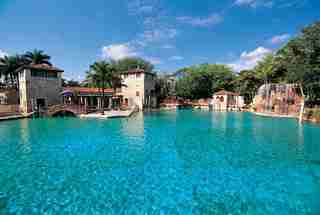While sandy beaches , luxury seaside hotels , and a thriving art scene are likely enough to beckon travelers to sunny Miami, the city’s many under-the-radar historical treasures are worth a visit as well. You've probably seen the rows of Art Deco buildings in South Beach, but you'll have to head to other neighborhoods to discover lesser-known gems. We’ve rounded up our top picks—from the country’s only public pool on the National Register of Historic Places to a 12th-century Spanish monastery—sure to be a welcome addition to any Miami itinerary.

Ancient Spanish Monastery
This medieval cloister was built in Segovia, Spain, in the 12th century. Following a social revolution in the 1830s, the monastery was seized, sold, and converted to a granary, until publisher William Randolph Hearst purchased the property and had its outbuildings shipped to the U.S. Dismantled and transported overseas in 11,000 wood crates, the cloister was reconstructed in Miami following Hearst’s death in 1952.

Coral Castle
Miami’s mysterious and highly unusual Coral Castle was completed in 1940 and was the brainchild of Edward Leedskalnin. The Latvian-born eccentric built the limestone castle as a monument to his love, Agnes, who left Leedskalnin the day before their wedding.

Venetian Pool
Designed by Denman Fink and Phineas Paist, this Coral Gables pool was built in 1923 from a coral rock quarry. The only public pool listed on the National Register of Historic Places, it boasts two large lookout towers, Mediterranean-inspired loggias and porticoes, and palm trees.
Deering Estate at Cutler
This 444-acre property—the former estate of businessman Charles Deering—is located on the edge of Biscayne Bay and features two historic homes, the Richmond Cottage and Stone House. Deering constructed the latter to house his collection of artworks by Spanish masters, such as El Greco and Diego Velázquez. Today the site can be explored via tours that include canoe excursions, butterfly walks, and guided nature hikes.
Vizcaya Museum & Gardens
Another Deering family property, this site is the former home of James Deering, Charles’s half-brother. The palatial villa—a National Historic Landmark—served as Deering’s subtropical winter home in the 1910s and today operates as a museum and garden.
